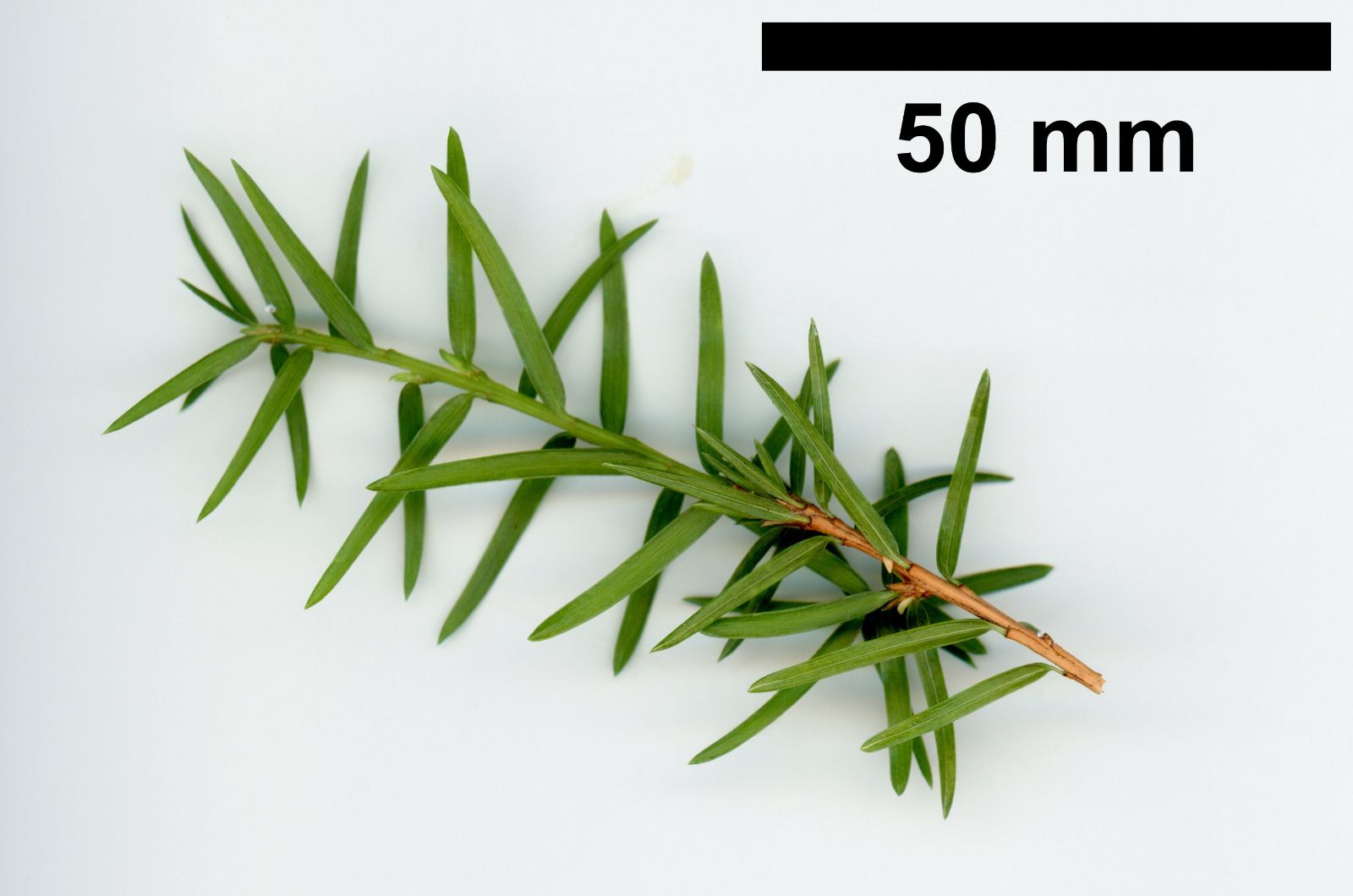Nothotsuga longibracteata
Credits
Article from New Trees by John Grimshaw & Ross Bayton
Recommended citation
'Nothotsuga longibracteata' from the website Trees and Shrubs Online (treesandshrubsonline.
Other taxa in genus
Tree to 30 m, though sometimes shrub-like, trunk often forked or multistemmed, 1–1.2 m dbh. Bark rough, scaly, greyish brown. Crown conical initially, with drooping leader, later dense and bushy with a flat top. Branchlets slender, firm, yellowish brown to brown, glabrous, with delicate grooves, branching somewhat dimorphic as in Cathaya, with small, lateral shoots developing on young branches. These do not extend significantly (0.5–1.5 cm long), and terminate with a tuft of leaves and a bud. Vegetative buds not resinous. Leaves dark, glossy green, spirally arranged and more or less pectinate, 1.1–2.4 × 0.1–0.25 cm, linear, petiolate, with a slightly twisted base, apex acute; stomata in two strips separated by the insignificant midrib. Male strobili clustered and pendent, terminal or subterminal on small, lateral shoots, pedunculate, 0.5–1 cm long, yellow-brown. Female cones erect, ovoid to oblong, apex obtuse-truncate, (2–)2.5–5(–5.8) × 1.5–2.5(–3) cm, purplish or red, turning dark brown later, pedunculate (the peduncle is actually a leafy shoot); the cones remain attached to the tree for several years before disintegrating, or snapping off at the peduncle. Seed scales 20–30, suborbicular to peltate, 1–2.2 × 1.2–2.5 cm. Bract scales spathulate, 0.7–1.8 cm long, slightly exserted. Seeds brown, ovoid, wings reddish brown, ovate to oblong, 0.7–1.2 × 0.5–0.6 cm. Farjon 1990. Distribution CHINA: Fujian, Guangdong, Guangxi, Guizhou, Hunan, Jiangxi. Habitat Low to medium elevation mountains, between 300 and 2300 m asl. USDA Hardiness Zone 7. Conservation status Endangered. Illustration Farjon 1990, Fu et al. 1999c; NT536, NT870.
The endangered Nothotsuga longibracteata has been introduced to cultivation as part of the International Conifer Conservation Programme (ICCP) of the Royal Botanic Garden Edinburgh. Two collections of seed have been received for this project. The first was a gift in 1999, from the director of Shenzen Botanical Garden, of seed collected by the Garden’s staff on the Hunan side of the Nan Ling Mountains (P. Thomas, pers. comm. 2007), registered under the number TNL 11. A second introduction for the ICCP came from Nanjing Botanic Garden via the US National Germplasm Repository and Bedgebury. From these two sources a limited number of seedlings have germinated. Some are being maintained in the Edinburgh collection while others have been out-housed to gardens with different conditions, such as Bedgebury. The plants are all still very small and it is too early to make useful comments on their performance. Coming from low altitudes in southern provinces of China it is possible that it will require considerable summer heat to do well, in the same way as the related Keteleeria does.


